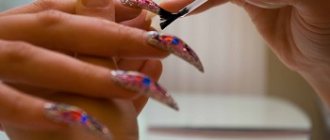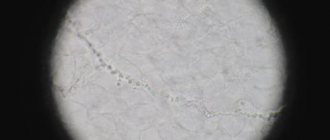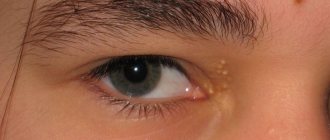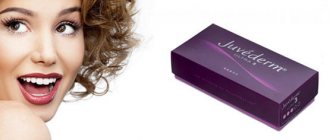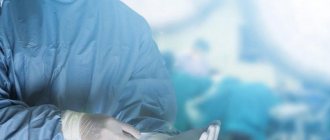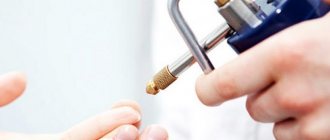One of the most common diseases of the skin of the feet and nails is a fungal infection (mycosis). Due to its high contagiousness (infectiousness), the wide variety of clinical manifestations and untimely seeking of medical help, the treatment of nail fungus is associated with certain difficulties. We recommend paying attention to even seemingly harmless symptoms, and if they occur, do not delay a visit to the podiatrist.
- WHAT IS NAIL FUNGUS?
- SYMPTOMS AND SIGNS OF NAIL FUNGUS
- DIAGNOSIS OF ONYCHOMYCOSIS
- FORMS OF NAIL DAMAGE
- TREATMENT OF NAIL FUNGUS IN THE PODOLOGY CLINIC
- INNOVATIVE LASER FOR TREATING FUNGUS
(the only one in Moscow) - PHOTOS BEFORE AND AFTER TREATMENT AT THE PODOLOGY CLINIC
What is nail fungus?
Mycoses are a collective concept that unites a wide group of diseases caused by various types of opportunistic and pathogenic fungi.
Due to the nature of their work, specialists at the Clinic of Podology have to deal with three types of pathogens that provoke fungus of the nails and skin of the feet:
- yeast-like;
- moldy;
- dermatophytes.
Most often, fungal infection of the nails (onychomycosis) occurs in older people, and in men it is 2-3 times more common than in women. Factors that can provoke the development of the disease include vascular pathologies, obesity and foot diseases. In addition, nail plate fungus is detected in 1/3 of patients with diabetic foot syndrome developing against the background of diabetes mellitus.
The introduction of a fungal pathogen can be caused by calluses, corns, flat feet, valgus deformity of the big toes (“bunions”), excessive dryness or excessive sweating of the skin and constant trauma to the feet. An important role in the development of the infectious process is played by insufficient adherence to the rules of personal hygiene when visiting swimming pools, saunas, baths, fitness centers and other public places with high humidity and air temperature, which are favorable for infection with mycosis.
Complications
If an ingrown toenail is not treated, it can have serious consequences. Local infection often leads to deeper suppuration of the subcutaneous tissue and bone (osteomyelitis). Complications are especially likely if there is concomitant diabetes mellitus or peripheral arterial disease. If the operation is performed incorrectly (insufficient or excessive treatment of the growth zone), then relapse or re-ingrowth, deformation of the nail plate are possible (see photo below). Relapses most often occur when the patient does not comply with preventive measures and doctor’s recommendations.
Symptoms and signs of nail fungus
In the early stages, the fungal infection affects the interdigital folds, the skin of the side and back of the foot. The most characteristic symptoms of mycosis of the foot:
- itching and peeling;
- increasing dryness of the skin.
As the pathological process develops in conditions of high humidity, loosening, swelling (maceration) and cracking of the skin occurs between the toes, and rough calluses and deep cracks form on the feet.
After the fungus “moves” to the nail plate, the clinical symptoms of the disease may vary depending on the type of lesion:
- with normotrophic – the thickness and configuration of the nail does not change, white or yellowish stripes and spots appear on the plate;
- with hypertrophic – the free edge of the nail turns yellow, thickens and gradually collapses;
- with onycholytic – the edge of the nail plate becomes thinner and peels off from the soft tissues.
If onychomycosis is not treated, the disease gradually enters an advanced stage. The nails become yellow-gray-brown in color, become cloudy, become excessively compacted, thicken and begin to crumble. They not only cause significant aesthetic discomfort and complicate hygienic care, but also cause pain, which intensifies when wearing any shoes.
Call your doctor if you have:
- temperature 100.4°F (38°C) or higher;
- chills;
- any of the following symptoms in or around the wound: increasing redness or swelling of the tip of a finger or toe;
- increasing pain or discomfort;
- skin that is hard, warm, or hot to the touch;
- bright yellow or green discharge;
- unpleasant odor from the skin or nails;
- bleeding that does not stop after pressing the napkin;
- discoloration of the tip of a finger or toe to blue or purple;
to come back to the beginning
Diagnosis of onychomycosis
Treatment of nail fungus begins with a diagnostic examination aimed at identifying the pathogen and includes a number of stages:
- medical examination and collection of information about the patient’s living conditions and medical history;
- microscopic examination of samples of affected nails, nail scrapings and subungual contents;
- bacteriological culture with determination of its type and sensitivity to antifungal drugs.
To distinguish fungal nail infections from non-infectious onychodystrophy, which is similar in symptoms, a comprehensive differential diagnosis is carried out.
Forms of nail damage
In accordance with the classification used in foreign and domestic medicine, fungal nail infections are divided into 4 clinical forms:
- distal-lateral subungual (damage to the nail at the free and lateral edge);
- superficial white (softening of the top layer, whitening or appearance of opal spots on the nail plate);
- proximal subungual (penetration of the fungus from the root of the nail, which extends the back part under the skin);
- total dystrophic (damage to the entire nail plate with partial or complete destruction).
Treatment of nail fungus
At the Podology Clinic, an individual scheme for each patient is developed for the treatment of nail fungus. Specialists use innovative therapeutic techniques in their work that allow them to radically combat the disease without the use of systemic antifungal drugs.
The pride of our clinic is RAST, a photodynamic emitter from HahnMedical and the only micropulse laser in Moscow, PinPointe FootLaser, designed for the treatment of nails affected by onychomycosis. With their help, podiatrists perform safe treatment of patients’ nails without drug load on the body.
Treatment of fungus at the Podology Clinic is carried out according to a plan that includes a number of preparatory measures:
- Consultation with a podologist, who, after an examination, decides on the need for laboratory diagnostics and explains in detail how to cure nail fungus. Conducting a mycological examination to identify, clarify the type of pathogen and determine its sensitivity to antimycotics.
- If the diagnosis of mycosis is confirmed, visit a mycologist and draw up an individual treatment plan, including photodynamic antimicrobial therapy. In an advanced stage, when effective removal of the fungus without systemic drug therapy is impossible, medications are selected for the patient taking into account age and general condition.
- After informing the client and obtaining his consent to treatment, recommendations for home care are prescribed.
- The first therapeutic stage: hardware cleaning of the affected nail plates. If there are skin problems, the space between the toes and the skin of the feet are cleaned at the same time. In this situation, treatment of toenail fungus is carried out using special podological products that delicately exfoliate rough skin.
The next stage is photodynamic treatment PACT Med (innovative technology from Hahn Medical System). This is an absolutely painless procedure that includes applying a special photosensitizing gel to the affected nails. After a 10-minute exposure, it is activated using a PAST emitter. The duration of the session, which provides deep disinfection of the nail plate, is 10 minutes.
Treatment of nail fungus is carried out once a week for 1-3 months. In the future, photodynamic treatment is performed once every 2-4 weeks, and the intervals between hardware cleaning sessions are increased to 4-8 weeks. Depending on the degree of damage to the nail plates and the severity of symptoms of mycosis of the foot, treatment lasts from 3 months to 2 years.
After removal
After the intervention, apply an aseptic bandage. The patient must prepare soft, loose shoes in advance, which he will wear immediately after the operation. It would be better if it were two sizes larger. With a bandage on your finger, it is difficult to put on what you usually wore on your leg. At our clinic we have a special long shoehorn that makes it convenient to put on your shoes. After returning home, you should try not to walk unnecessarily for the first 24 hours. The postoperative wound bleeds and the bandage may become saturated with blood. If this happens, you need to additionally bandage your finger yourself.
Treatment of nail fungus with innovative PinPointe laser
The Podology Clinic uses the latest nail treatment method using the PinPointe FootLaser micropulse laser. The treatment is quick, painless and guarantees complete elimination of the fungus. But most importantly, laser therapy allows you to do without removing the nail plate!
During the treatment, laser pulses delivered by beams heat the nail to 79° and destroy the causative agent of the disease after the first procedure. Pulse modulation ensures uniform heating of the treated area and prevents burns to the tissues of the nail fold.
Important! Failure to follow recommendations and deviation from the treatment plan will not only not bring the desired result, but can also lead to progression of the disease.
If you are faced with a fungal infection, do not despair and hide your nails from prying eyes in closed shoes. Podology Clinic specialists will help you find a safe and effective solution to your problem and return your feet to a healthy and well-groomed appearance!
Video review of the PinPointe FootLaser laser and interview with Dmitry Zakharchenko (CEO) on the latest device for treating onychomycosis:
Tool preparation
To prevent infection and dirt from entering the body, pay attention to pre-treatment and preparation of devices. Failure to comply with this rule is one of the restrictions why you cannot cut off marigolds.
For manipulation you will need three tools:
- Small metal scissors.
- Wire cutters.
- Disposable files.
It is recommended to pay attention to a metal device with a high abrasiveness so that the procedure is as safe as possible. In addition, it is easier to remove bacteria from a metal surface during processing.
The devices must first be disinfected. To do this, it is recommended to boil them; you can additionally use an antiseptic. Only a temperature of more than one hundred degrees will remove pathogenic microorganisms.
You should also use tissues and gloves to collect the cut nail and throw it away. To completely neutralize it, you can use the burning method.
